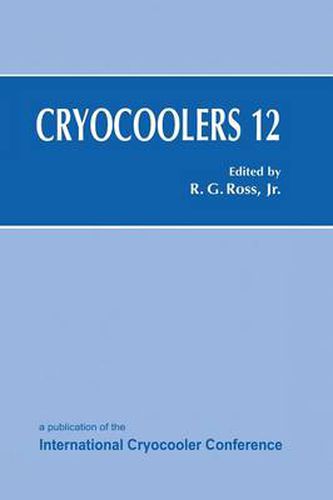Readings Newsletter
Become a Readings Member to make your shopping experience even easier.
Sign in or sign up for free!
You’re not far away from qualifying for FREE standard shipping within Australia
You’ve qualified for FREE standard shipping within Australia
The cart is loading…






This title is printed to order. This book may have been self-published. If so, we cannot guarantee the quality of the content. In the main most books will have gone through the editing process however some may not. We therefore suggest that you be aware of this before ordering this book. If in doubt check either the author or publisher’s details as we are unable to accept any returns unless they are faulty. Please contact us if you have any questions.
The last two years have witnessed a continuation in the breakthrough shift toward pulse tube cryocoolers for long-life, high-reliability cryocooler applications. One class of pulse tubes that has reached maturity is referred to as Stirling type because they are based on the linear Oxford Stirling-cooler type compressor; these generally provide cooling in the 30 to 100 K temperature range and operate at frequencies from 30 to 60 Hz. The other type of pulse tube cooler making great advances is the so-called Gifford-McMahon type.
Pulse tube coolers of this type use a G-M type compressor and lower frequency operation to achieve temperatures in the 2 to 10 K temperature range. Nearly a third of this proceedings covers these new developments in the pulse tube arena. Complementing the work on low-temperature pulse tubes is substantial continued progress on rare earth regenerator materials and Gifford-McMahon coolers. These technologies continue to make great progress in opening up the 2 - 4 K market. Also in the commercial sector, continued interest is being shown in the development of long-life, low-cost cryocoolers for the emerging high temperature superconductor electronics market, particularly the cellular telephone base-station market. At higher temperature levels, closed-cycle J-T or throttle-cycle refrigerators are taking advantage of mixed refrigerant gases to achieve low-cost cryocooler systems in the 65 to 80 K temperature range.
$9.00 standard shipping within Australia
FREE standard shipping within Australia for orders over $100.00
Express & International shipping calculated at checkout
This title is printed to order. This book may have been self-published. If so, we cannot guarantee the quality of the content. In the main most books will have gone through the editing process however some may not. We therefore suggest that you be aware of this before ordering this book. If in doubt check either the author or publisher’s details as we are unable to accept any returns unless they are faulty. Please contact us if you have any questions.
The last two years have witnessed a continuation in the breakthrough shift toward pulse tube cryocoolers for long-life, high-reliability cryocooler applications. One class of pulse tubes that has reached maturity is referred to as Stirling type because they are based on the linear Oxford Stirling-cooler type compressor; these generally provide cooling in the 30 to 100 K temperature range and operate at frequencies from 30 to 60 Hz. The other type of pulse tube cooler making great advances is the so-called Gifford-McMahon type.
Pulse tube coolers of this type use a G-M type compressor and lower frequency operation to achieve temperatures in the 2 to 10 K temperature range. Nearly a third of this proceedings covers these new developments in the pulse tube arena. Complementing the work on low-temperature pulse tubes is substantial continued progress on rare earth regenerator materials and Gifford-McMahon coolers. These technologies continue to make great progress in opening up the 2 - 4 K market. Also in the commercial sector, continued interest is being shown in the development of long-life, low-cost cryocoolers for the emerging high temperature superconductor electronics market, particularly the cellular telephone base-station market. At higher temperature levels, closed-cycle J-T or throttle-cycle refrigerators are taking advantage of mixed refrigerant gases to achieve low-cost cryocooler systems in the 65 to 80 K temperature range.